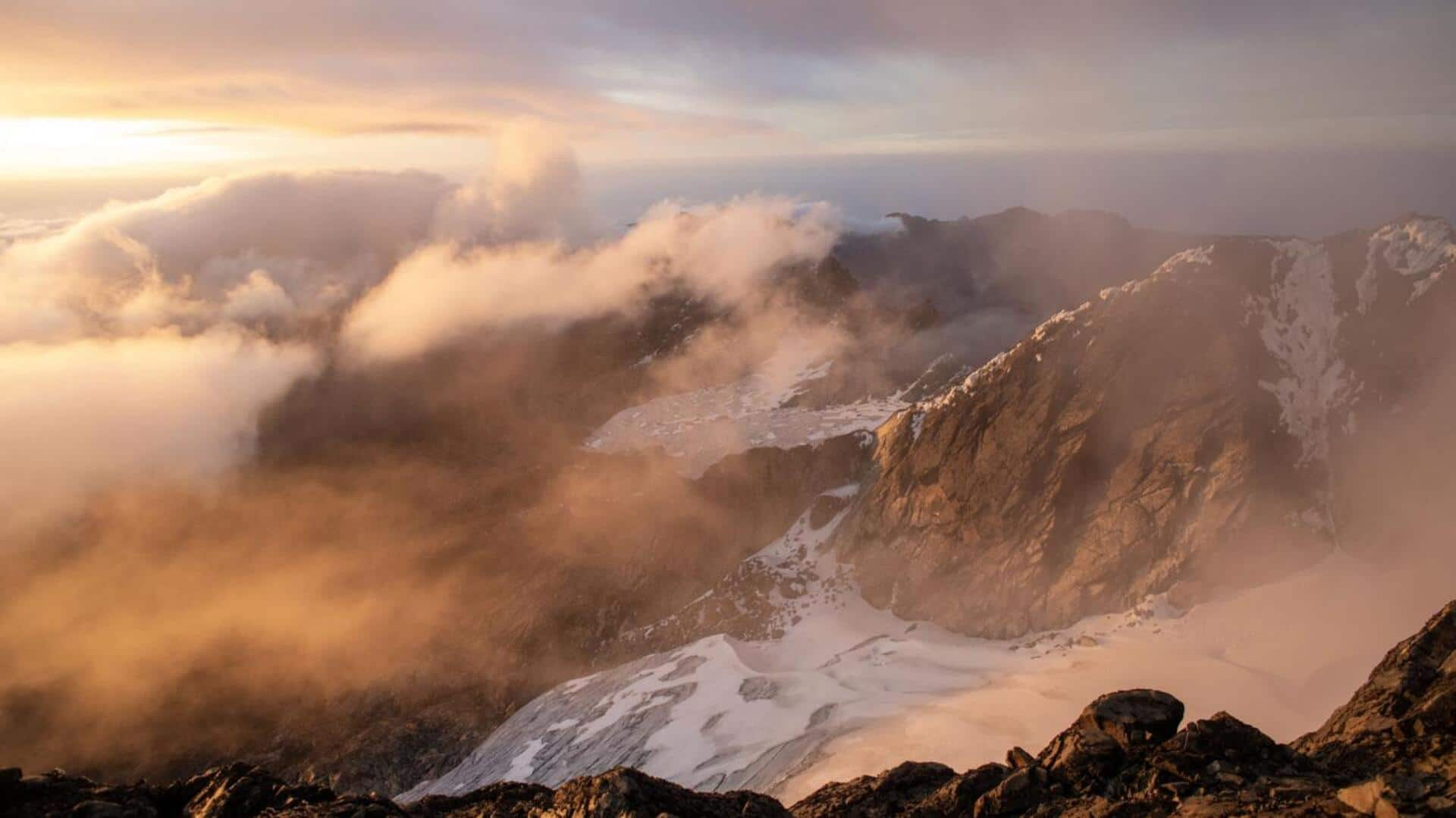
Exploring Uganda's unique equatorial ice caps
What's the story
Uganda, renowned for its wildlife and landscapes, harbors one of the world's strangest realities: equatorial ice caps. These ice caps, perched on the Rwenzori Mountains, present a unique chance to experience ice mere kilometers from the equator. This article explores the surreal adventure of trekking these equatorial glaciers, offering advice and inspiration for those seeking to undertake this unforgettable journey.
Preparation
Preparing for the trek
Hiking to Uganda's equatorial ice caps is a challenging adventure. The high altitude and demanding terrain require physical fitness and preparation. Travelers should dedicate at least two months before their trip to building endurance through regular hiking or cardiovascular exercises. Plus, one needs to spend a lot on good trekking gear. Think waterproof boots, thermal layers, and a dependable sleeping bag rated for freezing temperatures.
Timing
Best time to visit
The optimal time to visit the Rwenzori Mountains for unobstructed views of the ice caps is during the dry seasons, which occur from June to August and December to February. These periods offer the advantage of less rainfall, minimizing the risk of slippery trails and maximizing visibility. However, nighttime temperatures can plummet, so visitors should anticipate potentially chilly conditions despite the park's proximity to the Equator.
Altitude sickness
Understanding altitude sickness
Altitude sickness can be a serious issue for trekkers heading above 2,500 meters. Common symptoms are headache, nausea, dizziness, and shortness of breath. To reduce the risk, it's important to acclimatize. Spend a few days at moderate altitudes before attempting higher climbs. Stay well-hydrated and take it slow - your body will thank you!
Guides
Engaging with Local Guides
Employing local guides not only benefits the community but also significantly enriches your trekking experience. They possess intimate knowledge of the optimal routes, native flora, and fauna, and can provide fascinating insights into Rwenzori's history and culture. Professionally trained in traversing the demanding terrains, their guidance becomes particularly crucial during periods of adverse weather conditions.
Environment
Environmental consideration
The Rwenzori Mountains are a fragile ecosystem that deserves our utmost respect. Travelers are urged to follow leave-no-trace principles diligently. This means packing out all of your garbage, even items you might think are okay to leave behind, such as biodegradable waste (fruit peels, paper tissues, etc.). While these items may seem harmless, they can have a significant impact on wildlife habitats if everyone starts leaving them behind.